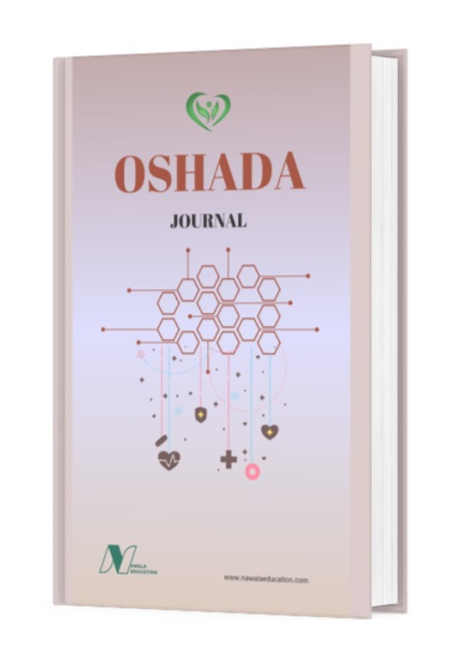Characteristics of Central Serous Chorioretinopathy Patients at Padang Eye Center Hospital in 2019-2023
DOI:
https://doi.org/10.62872/3zve9212Keywords:
Central Serous Chorioretinopathy, Neurosensory layer detachment, Retinal pigment epithelium, Risk FactorAbstract
Background: Central Serous Chorioretinopathy (CSCR) is a condition where serous fluid collects in the retinal pigment epithelium (RPE) which results in detachment of the neurosensory layer of the retina. Several risk factors that cause CSCR are gender, age, use of corticosteroids, 3rd trimester pregnancy, stress, type A personality, and use of anti-psychotic drugs. Objective: The purpose of this study was to describe the characteristics of Central Serous Chorioretinopathy (CSCR) patients at RSKM Padang Eye Center in 2019-2023. Method: The scope of this research is the field of eye disease. This research was conducted from December 2023 the study was conducted using categorical descriptive study. The population of this study were all Central Serous Chorioretinopathy (CSCR) patients recorded in the medical records at RSKM Padang Eye Center with a total of 34 samples using a total sampling technique. Data analysis uses univariate analysis, the data obtained will be processed with SPSS Statistics 26.0 and presented in table form. Results: From 34 patients with Central Serous Chorioretinopathy (CSCR) at RSKM Padang Eye Center, the majority were in the late adult age category ranged from 36-45 years old (52.9%). The most common gender is male by 73.5%. The initial visual acuity of the patients was good (6/6-6/18) were 35.3%, moderate visual acuity (<6/18-6/60) were 41.2%, and poor visual acuity (<6/60) were 23.5%. The most common treatment was diclofenac sodium as much as 73,5%. The patient's final visual acuity was good (6/6-6/18) were 82.4%, moderate visual acuity (<6/18-6/60) were 14.7%, and poor visual acuity (<6/60) were 2.9%. A total of 82.4% experienced improved visual acuity. Conclusion: Central Serous Chorioretinopathy (CSCR) were mostly 36-45 years old, male, with moderate initial visual acuity, received diclofenac sodium management, and good final visual acuity, most of the patient’s experienced improvement in visual acuity.
Downloads
References
Abouammoh MA. Advances in the treatment of central serous chorioretinopathy. Saudi J Ophthalmol [Internet]. 2015;29(4):278–86. Available from: http://dx.doi.org/10.1016/j.sjopt.2015.01.007
Adrean SD, Chaili S, Pirouz A, Grant S. 2020. Central serous chorioretinopathy in elderly patients mimicking occult neovascular age-related macular degeneration. Clin Ophthalmol.14:4073–8.
Bahadorani S, Maclean K, Wannamaker K, Chu ER, Gresores N, Sohn JH, et al. 2019.Treatment of central serous chorioretinopathy with topical NSAIDs. Clin Ophthalmol.13:1543–8.
Bartollino S, Semeraro F, Morescalchi F, Russo A, Gambicorti E, Pilotto A, et al. 2019. Central serous chorioretinopathy: Pathogenesis and management. Clin Ophthalmol.13:2341–52.
Breukink MB. 2017.Chronic central serous chorioretinopathy Studies. Radboud University Nijmegen. 23–235 p.
Chhablani J, Kanuri S, Sahoo NK, Singh SR, Kammari P, Jonnadula GB, et al. 2019. Prevalence and profi le of CSCR in an Indian cohort. Nepal J Ophthalmol. 11(21):5–10.
Çiloğlu E, Unal F, Dogan NC. 2018. The relationship between the central serous chorioretinopathy, choroidal thickness, and serum hormone levels. Graefe’s Arch Clin Exp Ophthalmol.256. (6):1111–6.
Das S, Das D. 2017. Central Serous Chorioretinopathy. Sci J Med Vis Res Foun.;XXXV(3):75–8.
Giannopoulos K, Gazouli M, Chatzistefanou K, Bakouli A, Moschos MM. The Genetic Background of Central Serous Chorioretinopathy: A Review on Central Serous Chorioretinopathy Genes. J Genomics.9:10–9.
Ikliluddin A. 2017. di Pusat Mata Nasional Rumah Sakit Mata Cicendo Tahun 2016 Characteristics of Central Serous Chorioretinopathy at the National Eye Center , Cicendo Eye Hospital 2016. Mutiara Med.17(1):29–35.
Ikliluddin A. 2017. Karakteristik Central Serous Chorioretinopathy di Pusat Mata Nasional Rumah Sakit Mata Cicendo Tahun 2016. Mutiara Med.17(1):29–35.Shin YU. 2017. Review and update for central serous chorioretinopathy. Hanyang Med Rev.;37(1):10.
Kido A, Miyake M, Tamura H, Hiragi S, Kimura T, Ohtera S, et al. 2021. Incidence of central serous chorioretinopathy (2011-2018): a nationwide population-based cohort study of Japan. Br J Ophthalmol.106(12):1748–53.
Liu P, Fang H, An G, Jin B, Lu C, Li S, et al. Chronic Central Serous Chorioretinopathy in Elderly Subjects: Structure and Blood Flow Characteristics of Retina and Choroid. Ophthalmol Ther [Internet]. 2023; Available from: https://doi.org/10.1007/s40123-023-00849-z
Pandey J. 2022. Journal of Clinical and Experimental A Study on Visual Outcome in Central Serous Chorioretinopathy ( CSCR ) with Different Treatment Modalities. J Clin Exp Ophthalmol. 13(1000926):1–6.
Ul Islam Q, Farooq MA, Mehboob MA. 2017. Factors affecting the visual outcome in acute central serous chorioretinopathy. Pakistan J Med Sci.33(1):3–7.
Indian Cohort. Nepal J Ophthalmol. 2019;11(1):5–10.
Sahoo NK, Ong J, Selvam A, Maltsev D, Sacconi R, Venkatesh R, et al. 2023. Longitudinal follow-up and outcome analysis in central serous chorioretinopathy. Eye.37(4):732–8.
Sahoo NK, Singh SR, Kammari P, Jonnadula GB, Das AV, Chhablani J. Prevalence and Profile of Central Serous Chorioretinopathy in an Walkden A, Atkinson O, Linton E, Bull A, Abraham L, Chhabra R. 2020. Visual and anatomical outcomes of central serous chorioretinopathy patients presenting to a tertiary unit: a prospective analysis. Ther Adv Ophthalmol.12:1–6.
Wong KH, Lau KP, Chhablani J, Tao Y, Li Q, Wong IY. Central serous chorioretinopathy: What we have learnt so far. Acta Ophthalmol. 2016;94(4):321–5.
Downloads
Published
Issue
Section
License
Copyright (c) 2024 Naima Lassie, Salsabilla Salsabilla, Tati Khairina, Hondrizal Hondrizal, Chandra Adilla (Author)

This work is licensed under a Creative Commons Attribution-ShareAlike 4.0 International License.

This work is licensed under a Creative Commons Attribution-ShareAlike 4.0 International License.











